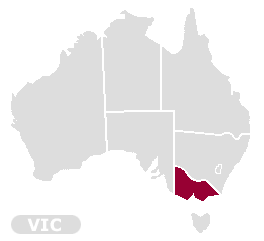
© Claire M. Hughes 2006, genealogy research Claire Hughes & Debby Dolgner-De L'Eyre, website assistance Lindsay Brown


The Priam carried John Edward Payne (1832) and RoseAnn Payne Templar (1826) and her family to Portland, in the Western Districts (Wimmera) of Victoria, Australia. The ship left Plymouth on her maiden voyage on 21 May 1852 with 277 passengers and arrived in Portland on 25 August 1852. The voyage lasting 96 days (13 weeks and 5 days/over 3 months) which included 12 days totally "becalmed", i.e. there was no wind at all. How horrible for them.
There were many people from adjoining Somerset villages on the Priam these included:
Mr. D.R. Comyn captained a fairly uneventful as such voyages go, except that a epidemic of measles swept the ship affecting old and young alike. Though there were few deaths from the disease. The Portland Advertiser commented at the immigrants on this vessel "seemed a very decent class".
Captain Comyn was based in Hobart Town and had a reputation for untiring energy and attention to the health, welfare and comfort of his passengers.
The Portland Advertiser published this as part of an account by a passenger a Mr. Fowler.
NEW SHIP
The Priam is a new ship on her first voyage and so far as our experience
goes, does great credit to her modelers and builders. She is owned by
Henry Reed, Esq. of London, and I believe, intended for a regular trader
to these colonies. Her commander is Captain Comyn, late of the 'Adelaide'
of Hobart Town, who will no doubt sustain the high reputation he has already
attained by untiring energy, in his duties as master, and by his attention
to the health, comfort and general welfare of his passengers - qualities
which were proved in our passage under very trying circumstances.
In short, the Priam was a well-built, brand new ship with an excellent
captain and crew. The adverse circumstances faced were unfavourable winds
and ill health which kept the ship's doctor busy.
BECALMED
After a good run out of the English Channel, the Priam sailed south into
the Atlantic Ocean past Spain. On the ninth day, the tiny Portuguese island
of Madeira was sighted off the coast of Morocco in Africa. The Trade winds
failed them sooner than usual and they became becalmed in the tropical
sun for twelve days. In the doldrums, the ship sat motionless on an oil
smooth sea that rose and fell in a terrible stomach-heaving motion. Without
a breath of wind, the sails flapped and fluttered to the up and down movement
of the sea. To venture out on deck bareheaded could cause sunstroke which
could bring on an attack of hysteria. Fanning did little to relieve the
discomfort of passengers below decks who were bathed in perspiration.
CROSSING THE LINE
On the voyage south, off the coast of Brazil, families and crew members
traditionally engaged in fun and games to celebrate the crossing of the
Line - the Equator. From here on, the stars overhead lost their familiar
pattern and the constellations of the Southern Hemisphere seemed strange
and alien.
Perhaps this was a time of realisation of the finality of what they had
done and the recognition of the immense difficulty of returning.
 |
GREAT CIRCLE ROUTE Following the Great Circle route into the South Atlantic, a constant succession of mostly east winds drove them as far west as Longitude 39 degrees, not a great distance from the coast of South America. However, they bypassed Rio de Janeiro on the Tropic of Capricorn, where ships would often call for a week to take on fresh provisions to complete the voyage to Australia. |
After unloading passengers at Portland, the Priam proceeded to Melbourne leaving there on 21 November 1852 for Bombay.
.